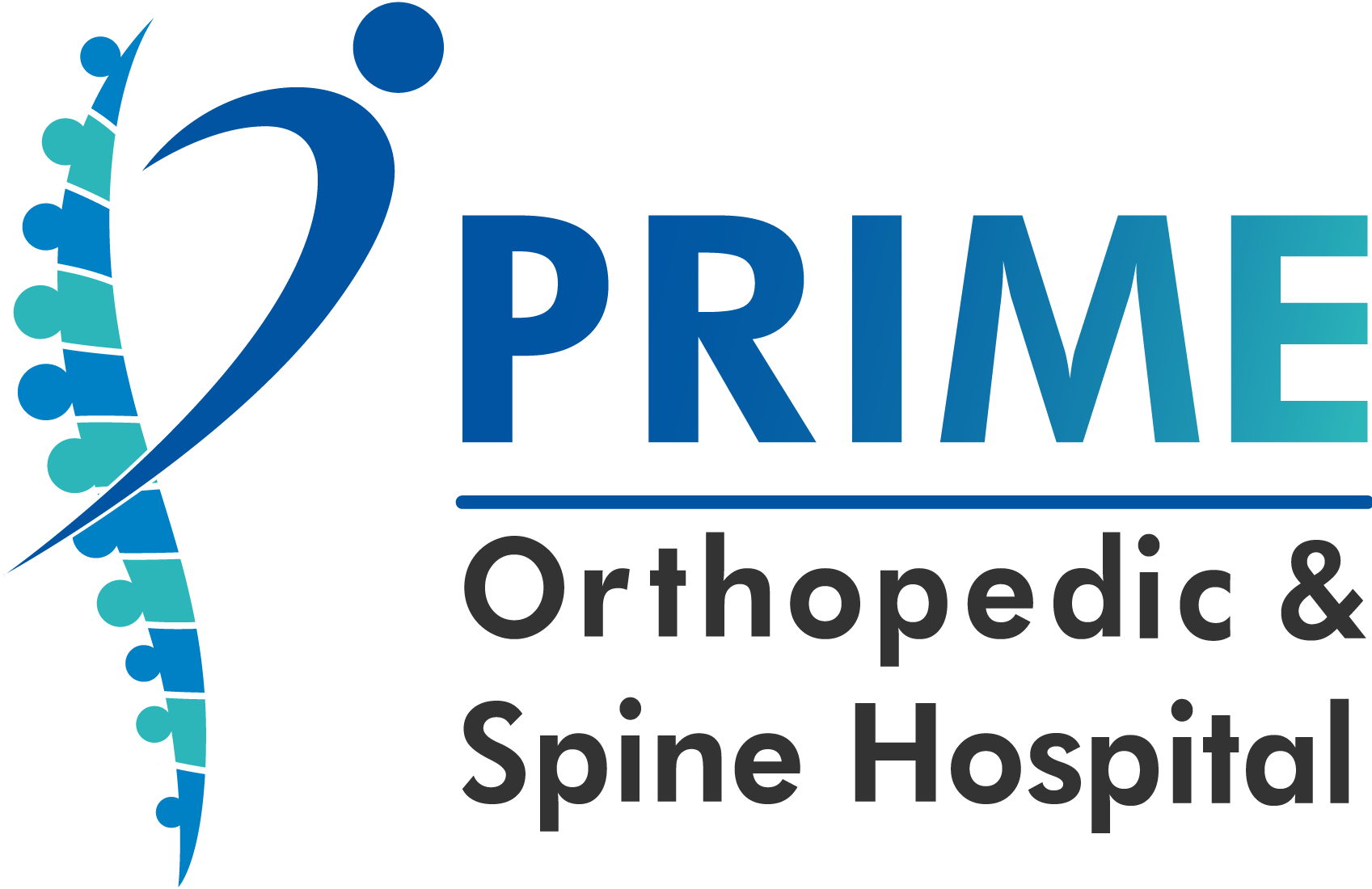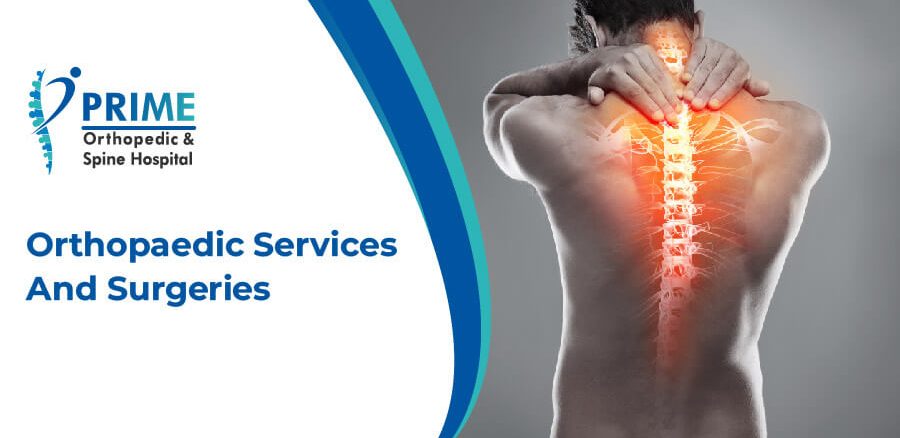Orthopaedics deals with the musculoskeletal system. Our musculoskeletal system includes our bones, joints, ligaments, tendons, and muscles. Generally, when you visit our hospital for bone or spine injuries, we can deal with it. However, in certain complex cases, we need the help of other specialist doctors.
As an orthopedic surgeon, working at Prime orthopedic hospital I wish to guide you about the kinds of diseases we deal with and the other specialists who help to deal with such issues in addition to us. However, it won’t be possible to explain all diseases in detail in this blog. So I’ll explain in detail about the bone problems and list the others.
Information About Orthopedic Problems
There can be many medical problems affecting bones, joints, ligaments, tendons, and muscles.
Bone problems include
Bone deformities
A bone deformity is an unusual, structural deviation or distortion of the bone’s shape from its normal alignment, length, and size.
A bone deformity can be there from birth or acquired due to any other reason.
Bones may become deformed due to many reasons such as
- congenital defects (from birth)
- developmental (from abnormal growth during childhood), and
- post-traumatic (from healing in a deformed position after a fracture).
Bones may be deformed in four ways:
- angulation (a bend in the bone)
- rotation or torsion (a twist in the bone)
- translation or displacement (a shift in the position of the bone after a fracture or osteotomy)
- limb length discrepancy (a difference in the length of a bone compared with the other side)
How does the best orthopedic hospital deal with bone deformities?
Often bone deformities need surgical procedures. A bend in the bone can be corrected by lengthening it. However, wherever required, we do cutting of bones or internal or external fixation of broken bones to correct them.
Bone infections
They can occur due to a variety of reasons. Inflammation or swelling of bone caused by infection. It is generally seen in the legs, arms or spine. Technically they are referred to as osteomyelitis. It can happen due to bacterial bloodstream infection, traumatic injury, frequent medication injections, a surgical procedure, or a prosthetic device.
In case we observe problems with your bones or spine then as the best spine hospital, we undertake the following procedures.
How are bone infections diagnosed?
We use the following tests to judge whether you have bone infections.
- Blood tests
- Imaging tests like X-rays. CT Scans, MRI
- Bone biopsy
How do we treat bone infections?
As one of the best orthopedic hospitals, we find very rare cases of bone infections. But in case we come across such cases, we need to do the following procedures.
- Through antibiotics/medicines
- Through surgical procedures
We perform the following surgical procedures at Prime orthopedic hospital to heal bone infections:
- Drain the infected area
- Remove diseased bone and tissue.
- Restore blood flow to the bone.
- Remove any foreign objects
- Amputate the limb
Bone tumours
Bone tumors develop when cells within a bone divide uncontrollably and form a lump or mass of abnormal tissue. Generally, they are not cancerous. Depending on the type of tumours, they can be dealt with. At our bone and joint hospital, we recommend non-surgical treatments like chemotherapy and radiation. However, in certain cases, we need to perform surgery to remove the tumour.
Fractures
A fracture is the most common reason why people visit our bone and joint hospital every single day. Bone fractures can happen to anyone, irrespective of their age. Many times fractures happen due to accidents. Sometimes diseases like Osteoporosis can develop and make your bones brittle. This causes them to break at the slightest instance.
Symptoms of bone fractures include
- Pain.
- Swelling.
- Tenderness.
- Inability to move a part of your body like you usually can.
- Bruising or discolouration.
- A deformity or bump that’s not usually on your body.
Although bone fractures cannot be totally avoided, there are some preventive measures that can help you to prevent them.
How can I reduce my risk for bone fractures?
Follow these general safety tips to reduce your risk of an injury:
- Always wear your seatbelt while driving.
- Wear the right protective equipment during sports.
- Make sure your home and workspace are free from the clutter that could trip you or others. Because most elders have fractures due to this factor.
- Always use the proper tools or equipment at home to reach things. Never stand on chairs, tables or countertops. Don’t use shortcuts to reach out to things. Slight laziness can be dangerous.
- Follow a diet and exercise plan that will help you maintain good bone health. Especially, include Vitamin D and Calcium in your diet.
- Talk to us or any best orthopedic hospital about a bone density test if you’re older than 50 or if you have a family history of osteoporosis.
- Use assistive devices like a cane or walker if you have difficulty walking or have an increased risk for falls.
Spinal deformities
Spine consists of vertebrae and disks. As one of the best spine hospital in Anand, we observe that spinal deformities can result from degeneration, trauma or birth defects. Spinal deformities need surgical intervention if it is causing pain to you.
Joint problems include:
- Arthritis
- Bursitis
- Dislocation
- Joint pain
- Joint swelling or inflammation
- Ligament tears
Common orthopaedic-related diagnoses based on body parts include:
Ankle And Foot
- Bunions
- Fasciitis
- Foot and ankle deformities
- Fractures
- Hammer’s toe
- Heel pain
- Heel spurs
- Joint pain and arthritis
- Sprains
- Tarsal tunnel syndrome
- Sesamoiditis
- Tendon or ligament injury
Hand And Wrist
- Fractures
- Joint pain
- Arthritis
- Tendon or ligament injury
- Carpal tunnel syndrome
- Ganglion cyst
- Tendinitis
- Tendon tears
- Infection
Shoulder
- Arthritis
- Bursitis
- Dislocation
- Frozen shoulder (adhesive capsulitis)
- Impingement syndrome
- Loose or foreign bodies
- Rotator cuff tear
- Rotator cuff tendinitis
- Separation
- Torn labrum
- SLAP tears
- Fractures
Knee
- Cartilage and meniscus injuries
- Dislocation of the kneecap (patella)
- Ligament sprains or tears (anterior cruciate, posterior cruciate, medial collateral, and lateral collateral ligament tears)
- Meniscus injuries
- Loose or foreign bodies
- Osgood-Schlatter disease
- Pain
- Tendinitis
- Fractures
- Tendon tears
Elbow
- Arthritis
- Bursitis
- Dislocation or separation
- Ligament sprains or tears
- Loose or foreign bodies
- Pain
- Tennis or golfers elbow (epicondylitis or tendinitis)
- Elbow stiffness or contractures
- Fractures
Spine
- Herniated (slipped) disk
- Infection of the spine
- Injury to the spine
- Scoliosis
- Spinal stenosis
- Spinal tumour
- Fractures
- Spinal cord injuries
- Arthritis
Services And Treatments Performed To Diagnose Orthopedic Problems.
Imaging procedures can help diagnose or even treat many orthopaedic conditions. They include
- Bone scans
- Computed tomography (CT) scans
- Magnetic resonance imaging (MRI) scans
- Arthrogram (joint x-ray)
- X-rays
- Discography
Sometimes, treatment involves injections of medicine into the painful area. This may involve corticosteroid or other types of injections into joints, tendons, ligaments, and around the spine.
Surgical procedures used in the treatment of orthopaedics include:
- Amputation
- Arthroscopic surgeries
- Bunionectomy and hammer toe repair
- Cartilage repair or resurfacing procedures
- Cartilage surgery on the knee
- Fracture care
- Joint fusion
- Arthroplasty or joint replacements
- Ligament reconstructions
- Repair of torn ligaments and tendons
- Spine surgery, including diskectomy, foraminotomy, laminectomy, and spinal fusion
Newer orthopaedic services procedures include:
- Minimally invasive surgery
- Advanced external fixation
- Use of bone graft substitutes and bone-fusing protein
Who Is Involved In Treating Orthopedic problems?
Orthopaedic care often involves a team approach. Your team may include a doctor, a non-doctor specialist as well as others. Non-doctor specialists are professionals such as physical therapists.
- Orthopaedic surgeons:
- Physical medicine and rehabilitation doctors
- Sports medicine physicians are doctors with experience in sports medicine.
- Neurologists
- Pain specialists
- Primary care doctors
- Psychiatrists
- Sports medicine specialists
Other health professionals that may be a part of the orthopaedics team include:
- Athletic trainers
- Chiropractors
- Counselors
- Nurse practitioners
- Physical therapists
- Physician assistants
- Psychologists
- Social workers
- Vocational workers
At Prime Orthopedic Hospital, we render services for all of the above problems. In addition to it, we have a physiotherapy department which helps you to recover faster after the surgery. If you have any orthopedic issues or want to have a second opinion, you can always consult us.

